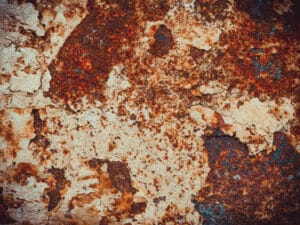
Refractory materials are designed to withstand extreme temperatures and harsh environments. They are essential in industries such as steelmaking, cement production, and petrochemicals, where they line furnaces, kilns, and reactors. These materials are typically composed of ceramics, which provide thermal resistance and mechanical stability. However, their performance can be compromised by various forms of corrosion, which can lead to failures, increased maintenance costs, and reduced production efficiency.
1. Chemical Attack: One of the primary causes of refractory corrosion is chemical attack from various substances present in the industrial environment. Acidic or basic compounds can react with the refractory material, leading to deterioration. For example, sulfates, chlorides, and alkalis can penetrate the refractory matrix, causing a breakdown of the chemical bonds that maintain the structure’s integrity.
2. Thermal Shock: Refractories are subject to rapid temperature fluctuations, which can induce thermal shock. This stress can create micro-cracks in the material, making it more susceptible to chemical attack and mechanical degradation. The expansion and contraction of the refractory during heating and cooling cycles can lead to significant wear over time.
3. Mechanical Wear: In many applications, refractories are exposed to abrasive materials, which can erode their surfaces. Mechanical wear can exacerbate the effects of chemical corrosion, as it exposes fresh surfaces to corrosive agents, accelerating the degradation process.
4. Moisture Infiltration : The presence of moisture can significantly affect the performance of refractory materials. Water can act as a medium for transporting corrosive agents and can also lead to hydrolysis reactions that weaken the refractory structure. Additionally, moisture can contribute to the formation of steam, which can create pressure and further exacerbate the degradation.
The implications of refractory corrosion extend beyond the immediate degradation of the material. The following are some of the critical consequences faced by industries:
1. Reduced Lifespan: Corroded refractories have a shorter operational lifespan, necessitating more frequent replacements. This not only increases material costs but also leads to unplanned shutdowns and disruptions in production schedules.
2. Compromised Safety: Degraded refractories can pose significant safety risks. Structural failures can lead to hazardous situations, including leaks of hot gases or molten material endangering personnel and equipment
3. Increased Maintenance Costs: The need for regular inspections, repairs, and replacements associated with corroded refractories can strain maintenance budgets. Additionally, the downtime required for these activities can lead to losses in productivity.
At RAI, we understand that addressing refractory corrosion requires a multifaceted approach. Here are some strategies to mitigate its impact:
1. Material Selection: Choosing the right refractory material is crucial. Factors such as the chemical environment, temperature fluctuations, and mechanical stresses should be carefully considered. Advanced materials that have enhanced resistance to corrosion, thermal shock, and abrasion can greatly improve performance.
2. Protective Coatings: Applying protective coatings can serve as a barrier against corrosive agents. These coatings can be tailored to withstand specific environmental conditions, providing an additional layer of protection for the underlying refractory material.
3. Regular Inspections: Implementing a robust inspection regime can help identify early signs of corrosion. Regular monitoring allows for timely maintenance and repairs, preventing minor issues from escalating into major failures.
4. Process Optimization: Analyzing and optimizing the operating conditions can also reduce the likelihood of corrosion. This may involve controlling the chemical composition of the materials being processed, managing temperature profiles, and minimizing moisture ingress.
5. Innovative Anchoring Solutions: As a manufacturer of refractory anchors, we are committed to developing innovative anchoring solutions that enhance the stability and longevity of refractories. Our anchors are designed to minimize thermal stress and provide superior support, ultimately contributing to the overall durability of the refractory lining.
Refractory corrosion is an inevitable challenge in high-temperature industrial applications, but understanding its causes and implications is crucial for effective management. By investing in the right materials, protective measures, and proactive maintenance strategies, industries can significantly reduce the impact of corrosion on refractory systems. At RAI, we provide high-quality refractory anchors and solutions that enhance the performance and longevity of refractory materials, ensuring that our clients can operate safely and efficiently in demanding environments. As we continue to innovate and adapt to the evolving needs of the industry, we remain committed to excellence in refractory solutions.